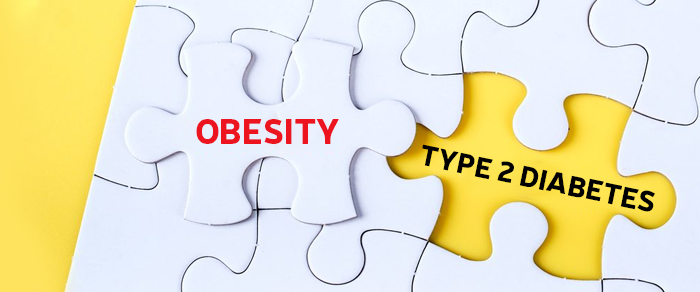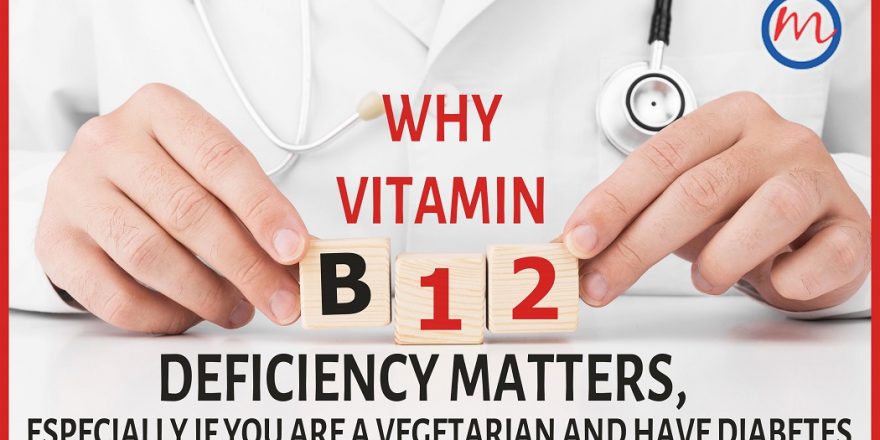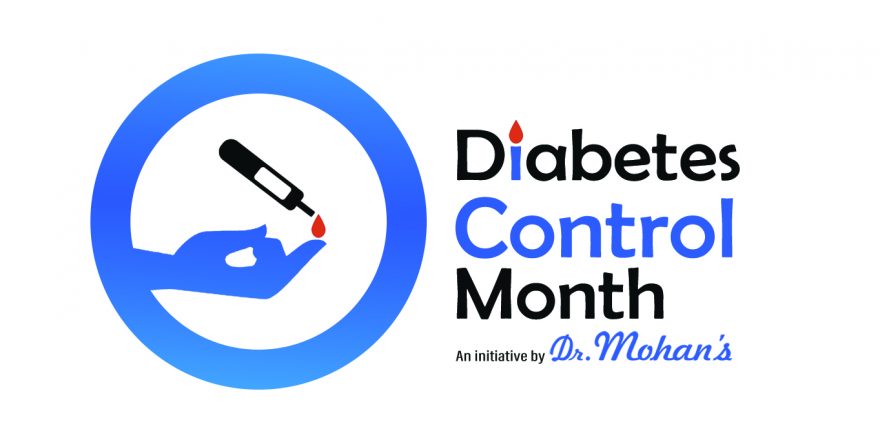Type 2 diabetes mellitus, also known as T2DM is a chronic metabolic disorder caused by high levels of blood sugar, due to the body’s inability to produce insulin (insulin deficiency) and that of the peripheral organs to respond appropriately to insulin (peripheral insulin resistance). Apart from being called a disease of “impaired glucose metabolism”, it is also a disease of “impaired fat metabolism”. Research in recent times has shown that obesity could cause Type 2 Diabetes in this way. Let’s see how this happens.
How does fat accumulate in the body?
The abnormal gain of fat mass is generally due to overconsumption of carbohydrates, sugar, fat, oils, etc. and underutilization of the excess energy obtained in this way (on account of low levels of physical activity). In instances of overconsumption of carbs, a hormone in our body called leptin is triggered to alert the brain to reduce the appetite, to tell the body to exercise and be more physically active, so that more calories are burnt. With an increase in the fat mass in the body, leptin gets stimulated which in turn alerts the brain. This is a natural way to maintain a balance in the body. Prolonged higher levels of leptin in the blood cause leptin resistance, meaning the brain is unable to recognize these high levels of leptin and thus loses the ability to command the body to burn more fat. This results in the accumulation of fats in tissues such as the liver, pancreas, and heart, eventually leading to cardiovascular disease and other complications.
Not all obese people necessarily develop Type 2 Diabetes. This is mainly related to the way in which fat cells get accumulated in the body. There are 2 ways in which excess fat gets stored – one, beneath the skin (subcutaneous) and the other is in the abdominal cavity (viscera/Waist) of obese patients. Compared to the abdomen, fat deposited under the skin is relatively harmless as it does not produce harmful hormones (adipocytokines). The skin has more space to store fat since it is the largest organ in the body. However, the fat that gets accumulated within the abdomen and around internal organs is more toxic. Fat that gets stored here tends to be metabolically more active. Hence these fat cells tend to produce more adipocytokines, the inflammatory hormones which enhances insulin resistance All in all, increased amount of visceral fat is directly and independently linked to several complications such as insulin resistance, altered glucose tolerance, type 2 diabetes, high cholesterol levels, heart diseases, etc.
The best way to detect excess visceral fat is by measuring the waist circumference or the waist to hip ratio. High waist circumference and waist-to-hip ratio increase the risk of diabetes.
Research has shown that overweight or obese people with reasonable waist circumference and waist-to-hip ratio have better prospects compared to normal-weight people with unusual belly fat who showed a higher risk of Type 2 Diabetes. Further, the greater the muscular mass in the body, the higher the sugar metabolizing capacity and thus, lower the risk of T2DM.
All obese need not have diabetes
The above data shows that the risk of developing Type 2 Diabetes does not fully depend on whether an individual is thin or fat. What matters more is where the excess fat is deposited (visceral or subcutaneous). Higher the amount of abdominal fat, the higher is the risk of developing Type 2 Diabetes. People who are overall thin, but have high quantities of visceral fat are called metabolically unhealthy lean patients. At the same time, people who are obese or have high BMI but little abdominal fat are not at a higher risk of T2DM. These set of people are otherwise called metabolically healthy obese people.
Obesity may not be the one and only cause of diabetes
Obesity need not be the only cause of T2DM. Other causes of diabetes mellitus are family history and genetics, sedentary lifestyle, unhealthy eating habits, aging, gestational diabetes, high BP and cholesterol. Let us take up only a few common aspects for discussion now.
- Family history and Genetics:
Children both of whose parents have diabetes have close to 100% risk of developing diabetes and children with one parent having diabetes are at almost 50% risk. Further, individuals belonging to ethnic groups such as Asians, African Americans and Native Americans are at increased risk of developing type 2 diabetes as compared to Europeans, and this risk is present even at lower levels of body weight.
There are also some types of diabetes other than Type 2 Diabetes Mellitus (T2DM) for which obesity is not a risk factor. These include type 1 diabetes (in which the pancreatic beta cells are destroyed), monogenic diabetes (due to genetic defects of the pancreatic beta cells) and pancreatic diabetes (due to damage to the pancreas for various reasons).
- Sedentary Lifestyle:
Another cause of diabetes mellitus is Physical inactivity along with excess weight due to unhealthy eating habits (more fatty food, low in fiber and protein-rich food). Having more muscle mass will reduce the risk, since muscles have more insulin receptors, so they utilize more sugar during physical activity, thus helping in maintaining glucose balance.
- Aging:
As we grow old, every cell in the body undergoes a change and so will many organs. The pancreas is one such organ that ages with us and reduces insulin production as compared to the younger pancreas. And thus there could be deficient production along with impaired function.
To know your risk of developing type 2 diabetes, please schedule an appointment with a healthcare professional or a diabetes specialist and get to know more





3 thoughts on “Does Obesity Always Mean T2DM (Type 2 Diabetes mellitus)?”
I bought Nightrider BluCon 2 years back after hearing a lot about its working. After using the device, I get to know why this device is worth every appreciation. It helps me to have a continuous check on my blood glucose level and also allowed me to share the readings with my closed ones with the help of the LinkBluCon app.